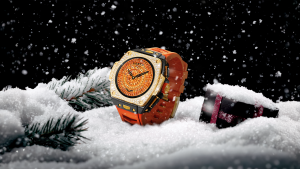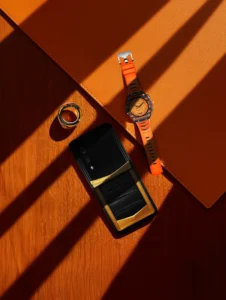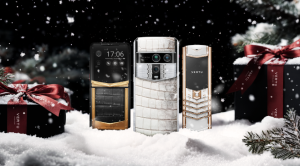
Image source: Pexels
You glance at your smart ring's app, and it congratulates you on a perfect night's sleep. But as you reach for your third cup of coffee before noon, you can't help but wonder if the data truly reflects how you feel. This nagging doubt leads to the critical question on every health-conscious individual's mind: Which ring is the most accurate? In 2025, you deserve more than just numbers; you need actionable, trustworthy insights. The wearable market has exploded with options beyond the familiar names, each claiming superior precision. This guide is your definitive resource for cutting through the noise. We will dive deep into head-to-head comparisons, scrutinizing the heart rate and sleep tracking capabilities of the top smart rings available today. We'll analyze the underlying technology, compare performance against key health metrics, and help you confidently choose the device that will give you the most reliable picture of your well-being.
Understanding Smart Ring Accuracy: What Really Matters in 2025?
As smart rings become more integrated into our daily health routines, the question, “Which ring is the most accurate?” is more relevant than ever. The answer, however, isn't a simple one. In 2025, accuracy is not a single score but a complex interplay of sensor technology, sophisticated software, and user-specific factors. True accuracy means delivering consistent, reliable data that you can trust to make informed decisions about your health and wellness.
Defining ‘Accuracy' in Wearable Health Tech
Smart ring accuracy isn't just one number; it's about reliable tracking of sleep stages, heart rate, HRV, and temperature. A device might excel at tracking resting heart rate but be less precise in differentiating between light and REM sleep. True performance is measured by its consistency across all core metrics. Consumers must look beyond marketing claims and understand what accuracy means for each specific measurement.
| Metric | What High Accuracy Means | Common Challenges |
|---|---|---|
| Resting Heart Rate | Consistently matching measurements from an ECG or chest strap. | Motion artifacts during sleep can cause temporary spikes. |
| Sleep Staging | Correctly identifying and timing Light, Deep, and REM sleep cycles. | Differentiating between light sleep and periods of wakefulness. |
| Body Temperature | Detecting subtle nightly deviations from your personal baseline. | External factors like room temperature can influence readings. |
| HRV (Heart Rate Variability) | Precisely measuring the millisecond variations between heartbeats. | Stress, caffeine, and alcohol can significantly alter data. |
Key Metrics: Sleep, Heart Rate, and Beyond
The most valuable smart rings provide a holistic view of your health by tracking several key biometrics. These include:
- Sleep Tracking: This goes beyond duration to analyze sleep stages. Deep sleep is crucial for physical recovery, while REM sleep is vital for cognitive function and memory consolidation.
- Heart Rate & HRV: Continuous heart rate monitoring helps establish a baseline, while HRV provides deep insights into your nervous system's balance and your body's readiness for strain.
- Body Temperature: By tracking nightly fluctuations, rings can offer insights into potential illness, recovery status, and menstrual cycle phases.
The Role of Sensors and Algorithms
At the heart of every smart ring are its sensors and the software that interprets their data. Understand how PPG sensors and advanced algorithms work together to interpret your body's signals.
Photoplethysmography (PPG) sensors use LEDs to shine light into your finger. The sensor then measures the amount of light that reflects back, which varies as blood pulses through your capillaries. This raw data is then fed into complex algorithms that filter out noise and translate the light signals into meaningful metrics like heart rate, HRV, and respiratory rate.
The quality of both the hardware (sensors) and the software (algorithms) determines the final accuracy of the device.
Ultimately, the reliability of your data hinges on more than just technology. In 2025, factors like fit and skin contact are crucial for consistent data reliability. A ring that is too loose will allow external light to interfere with the PPG sensor, while one that is too tight can restrict blood flow. Ensuring a snug, comfortable fit is the single most important step you can take to get the most accurate readings possible from your device.
Top Contenders: A 2025 Performance Comparison
As the smart ring market matures, the central question for discerning users remains: Which ring is the most accurate? In 2025, the competition is fiercer than ever, with established leaders facing innovative challengers. While perfect accuracy is elusive, a few key players stand out for their precision in specific domains. This comparison dissects the top contenders, evaluating not just their sensor data but also the holistic user experience, including battery life and app usability.
Oura Ring 4: The Benchmark for Sleep and Recovery Accuracy
Oura has long been the gold standard for sleep tracking, and the anticipated Oura Ring 4 is expected to build upon this legacy. Its predecessor, the Gen3, has been a subject of numerous independent studies comparing its sleep stage analysis (Light, Deep, REM) to the clinical benchmark of polysomnography (PSG). While not a medical device, its accuracy in tracking key metrics like heart rate variability (HRV) and body temperature has made it a favorite among athletes and wellness experts for gauging recovery.
The key to Oura's performance lies in its sophisticated algorithms that translate raw sensor data into actionable insights via its “Readiness Score.” The app experience is polished, though it comes with a mandatory monthly subscription to unlock its full potential.
For users prioritizing sleep quality and physiological recovery, Oura's proven track record sets a high bar for competitors.
Samsung Galaxy Ring: Innovations in Heart Rate Monitoring Accuracy
Samsung enters the ring with a significant advantage: years of experience developing health sensors for its Galaxy Watch series. The Samsung Galaxy Ring is poised to leverage this expertise, with a potential focus on best-in-class heart rate monitoring and activity tracking. While detailed specifications are emerging, Samsung's goal is likely to offer seamless integration within its ecosystem, providing continuous heart rate data that is more accurate and less obtrusive than a wrist-worn device during certain activities.
The challenge for Samsung will be to match Oura's sleep algorithm maturity. However, for users already embedded in the Samsung Health ecosystem, its potential for precise all-day heart rate and activity tracking could make it the most accurate choice for their fitness-oriented lifestyle.
Ultrahuman Ring Air: Balancing Accuracy with User Experience
Ultrahuman Ring Air has carved out a niche by focusing on metabolic health and a user-centric approach. It offers a compelling alternative to Oura, providing detailed insights without a subscription fee. In terms of performance, it holds its own, offering reliable data on sleep, HRV, and movement. While some users report minor discrepancies compared to Oura, its “Metabolism Score” and timely “Stimulant Window” recommendations provide a unique value proposition. The app is intuitive, and the device's lightweight design enhances user experience. It represents a balance, offering high-level accuracy that is more than sufficient for most users while excelling in software features and value.
RingConn & Other Alternatives: Accuracy vs. Value
Brands like RingConn, Movano Evie, and others are democratizing the smart ring space by offering core tracking features at a more accessible price point and, crucially, without subscriptions. The primary trade-off often lies in the fine-tuning of algorithms and overall software polish. While they accurately track foundational metrics like steps, sleep duration, and heart rate, their sleep stage and recovery analysis may not be as nuanced as Oura's. For budget-conscious consumers seeking directional health insights rather than clinical-grade precision, these rings offer exceptional value.
| Feature | Oura Ring 4 (Expected) | Samsung Galaxy Ring (Potential) | Ultrahuman Ring Air | RingConn |
|---|---|---|---|---|
| Primary Accuracy Focus | Sleep Staging & Recovery (HRV) | Continuous Heart Rate & Activity | Metabolic Health & Sleep | Overall Wellness Tracking |
| Subscription Required | Yes | Unknown | No | No |
| Typical Battery Life | 5-7 days | Unknown | 4-6 days | 6-7 days |
| Key Differentiator | Proven sleep algorithms | Samsung Health ecosystem integration | No subscription, metabolism focus | Affordability |
Maximizing Your Smart Ring's Data Reliability in 2025
As you explore the smart ring market, a common question is, “Which ring is the most accurate?” While device technology is crucial, the reliability of your data heavily depends on how you use it. Maximizing your ring's potential goes beyond the brand; it involves proper wear, consistent habits, and a clear understanding of what the numbers truly mean for your well-being. By following best practices, you can ensure the data you receive is as precise and actionable as possible.
The Importance of Proper Fit for Accurate Readings
The foundation of reliable data is a perfect fit. Your smart ring's sensors, typically located on the inner band, need consistent, firm contact with your skin to accurately measure heart rate, blood oxygen, and temperature. A loose ring can slide around, creating gaps that lead to missed or erratic readings. Conversely, a ring that's too tight can restrict blood flow, also skewing the data. You should be able to rotate the ring with some effort, but it shouldn't spin freely. Learning how to wear your smart ring correctly is the first step toward optimal data reliability.
| Fit Issue | Sensor Contact | Potential Data Impact |
|---|---|---|
| Too Loose | Intermittent/Gaps | Inaccurate heart rate variability (HRV), missed sleep stages, underestimated activity. |
| Too Tight | Constricted | Skewed resting heart rate readings, potential for inaccurate temperature data. |
| Just Right | Consistent/Snug | Optimal data collection for all metrics, leading to higher reliability. |
Tips for Consistent Sleep and Activity Tracking
Consistency is key to building a useful health baseline. To ensure your ring captures a complete picture of your daily patterns and provides accurate sleep monitoring, follow these best practices:
- Wear it 24/7: Only remove your ring for charging to avoid data gaps, especially during sleep.
- Choose the Right Finger: Wear the ring on your non-dominant hand to minimize “noise” from excessive movement, which can be misinterpreted as steps or activity.
- Keep Sensors Clean: Gently wipe the inside of your ring with a soft, dry cloth weekly to remove oils and residue that can interfere with sensor readings.
Understanding Your Data: Beyond Raw Numbers
Your smart ring provides a stream of raw numbers, but their true value lies in interpreting them within the context of your overall lifestyle. A single night of poor sleep or a sudden spike in your resting heart rate isn't necessarily a cause for alarm. Instead, focus on patterns over time.
Look at your weekly or monthly averages. Are your readiness scores consistently trending down? Is your sleep quality improving after you started a new evening routine? This contextual analysis provides more meaningful insights than fixating on a single day's data.
When to Trust Your Ring vs. Seeking Professional Advice
It's vital to recognize the limitations of wearable devices. Smart rings are powerful wellness tools, not medical-grade instruments. They are excellent for identifying trends and motivating healthy habits but cannot diagnose conditions. If your ring flags a significant, persistent anomaly—such as a consistently low HRV or an unusually high resting heart rate for several days—use this data as a conversation starter with a healthcare professional. Never ignore physical symptoms like chest pain or severe shortness of breath, regardless of what your ring's data indicates.
FAQ (Frequently Asked Questions)
Q1: Can a smart ring replace a medical device for heart monitoring?
A1: No. While smart rings are becoming increasingly accurate for wellness tracking, they are not medical devices. They are excellent for monitoring trends in resting heart rate, HRV, and sleep patterns. However, for diagnosing or managing a medical condition, you must consult a healthcare professional and use clinically validated devices like an ECG.
Q2: Why does my smart ring's sleep data sometimes not match how I feel?
A2: This is a common experience. Smart rings use motion and heart rate data to estimate sleep stages (Light, Deep, REM). While they are good at identifying sleep vs. wakefulness, differentiating between sleep stages is complex and can be less precise than a clinical sleep study (polysomnography). Factors like a restless night without fully waking, stress, or alcohol can also lead to discrepancies between the data and your subjective feeling of restfulness.
Q3: Does a more expensive ring or a subscription fee guarantee better accuracy?
A3: Not necessarily. A higher price or a subscription often pays for more advanced algorithms, a polished user interface, and deeper analytics (like Oura's Readiness Score). While these can provide more nuanced insights, a non-subscription ring like Ultrahuman or RingConn can still be highly accurate for core metrics like heart rate, sleep duration, and body temperature. The key is to match the ring's strengths—and cost—to your specific tracking priorities.
Conclusion
In the quest to answer “Which ring is the most accurate?“, it's clear that the best device in 2025 is the one that aligns with your personal health goals and usage habits. We've seen that while Oura remains a benchmark for sleep and recovery analysis, formidable competitors like the Samsung Galaxy Ring and Ultrahuman Ring Air offer compelling accuracy in heart rate monitoring and metabolic health, often without a subscription. Ultimately, the precision of any smart ring is a partnership between its technology and you, the user. Ensuring a proper fit, maintaining consistent wear, and learning to interpret trends over time are just as crucial as the sensors on your finger. By understanding these nuances, you can transform your smart ring from a simple data collector into a powerful tool for optimizing your well-being.
Now that you're equipped with the knowledge to look beyond the marketing claims, we want to hear from you. Which features are most important for your health journey, and which smart ring do you believe leads the pack in accuracy? Share your experiences and insights in the comments below to help our community find the perfect device for their needs.








